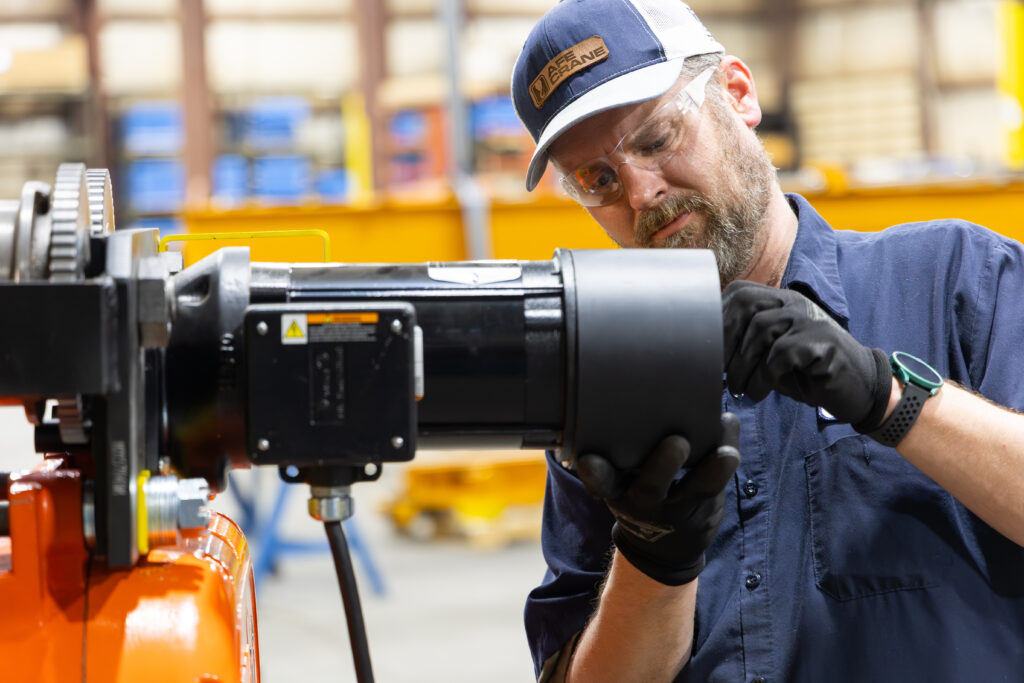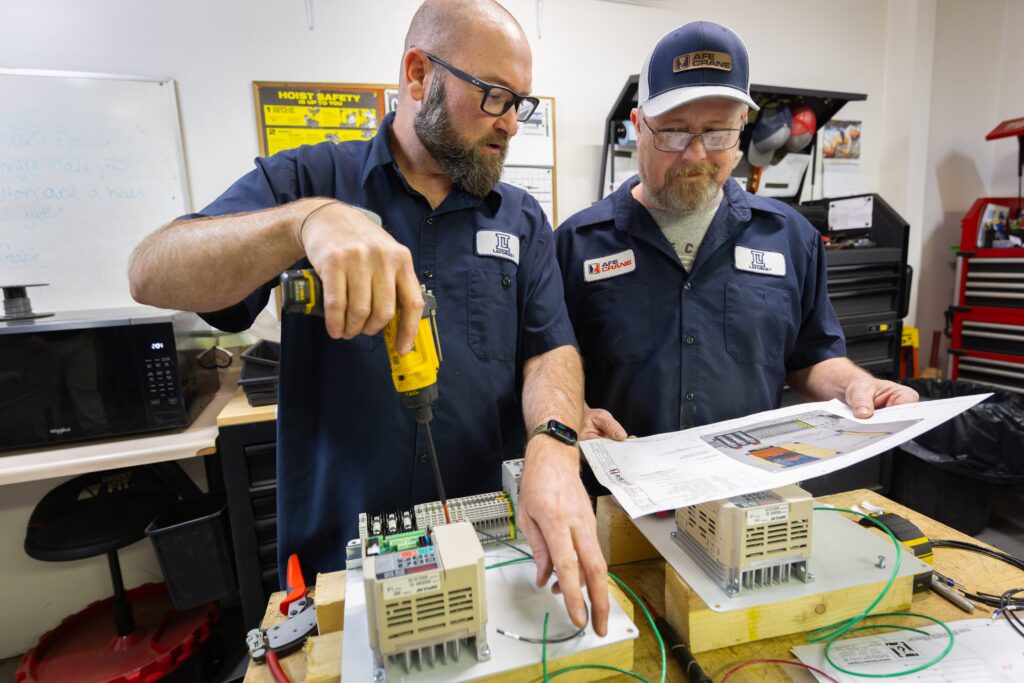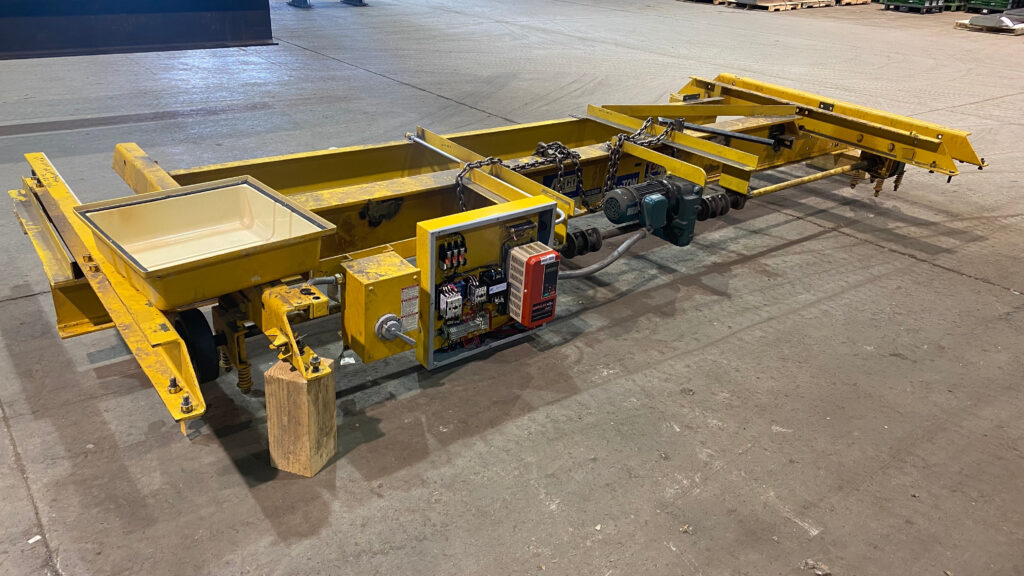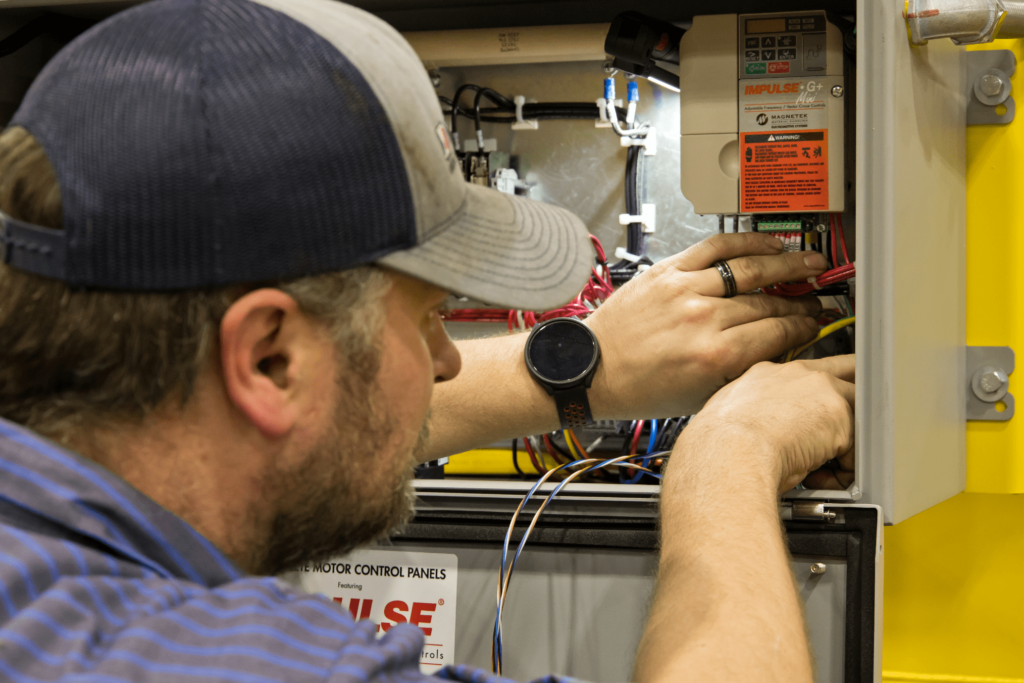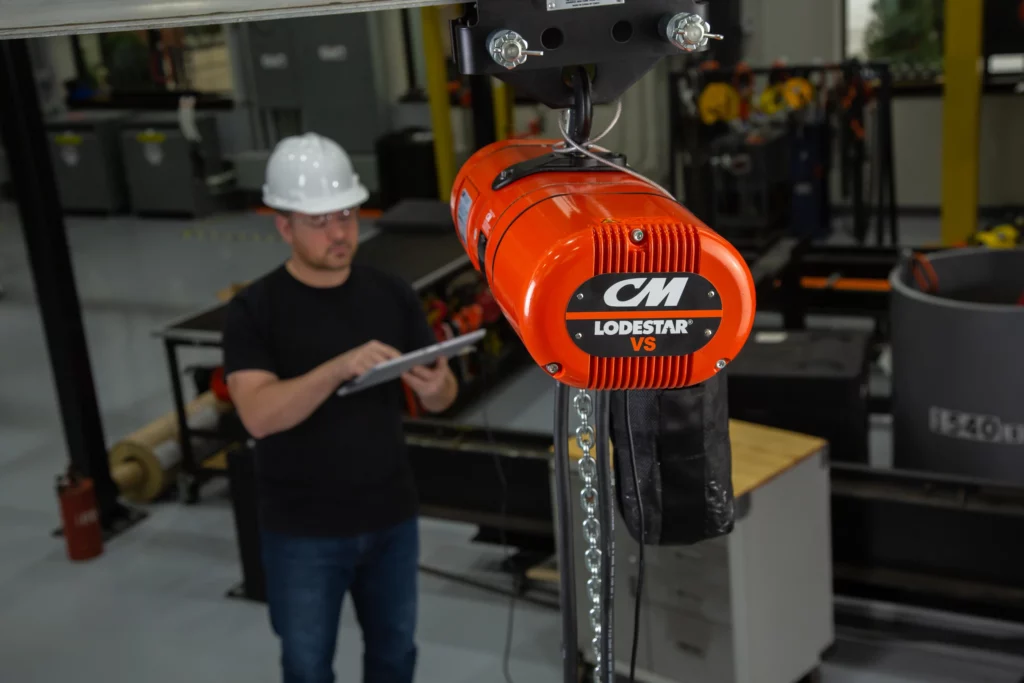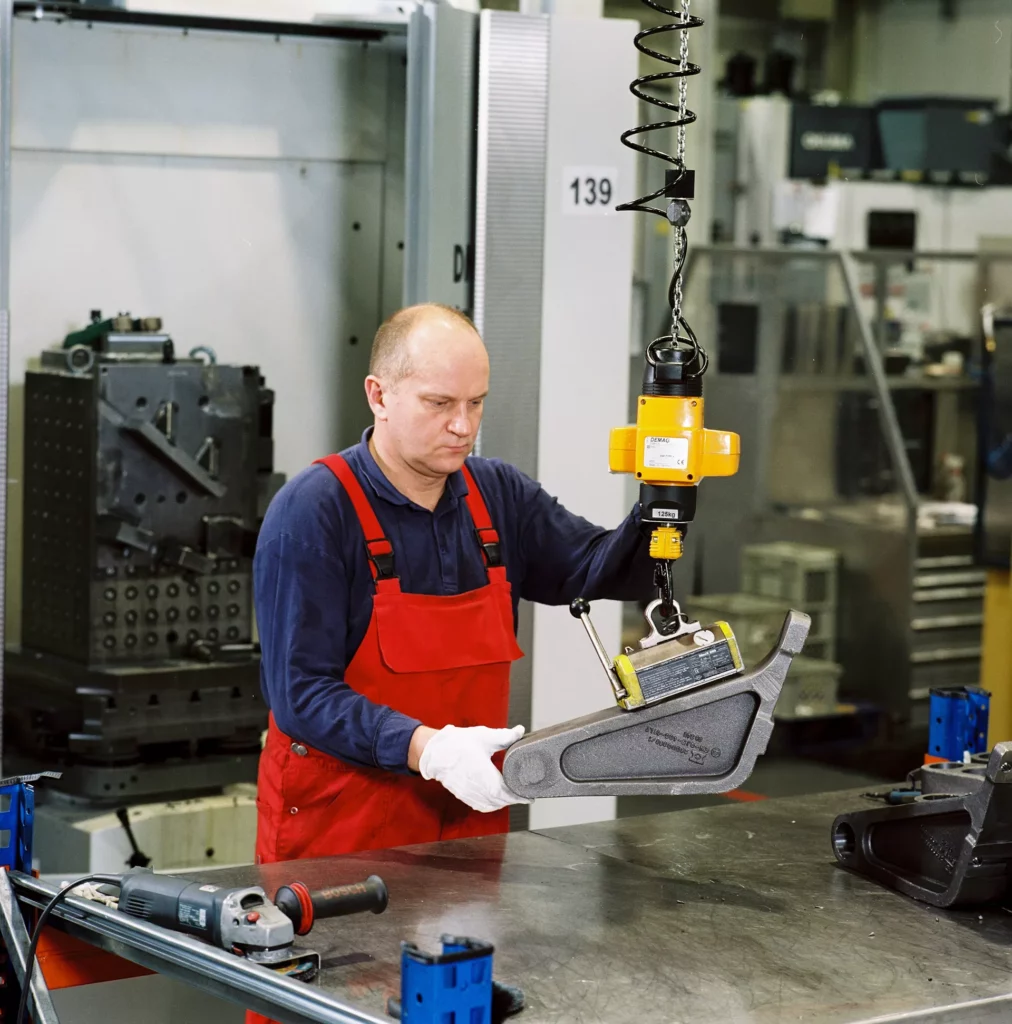Hoist Overload Protection Is Not Guaranteed
Many hoist users assume that their hoist is equipped with overload protection, meaning it will automatically prevent lifting more than its rated capacity. However, this assumption may be false.
The specifications governing hoists do not mandate overload protection as a standard feature.
- Electric chain hoists follow ASME HST-1 – 2017 – Performance Standard for Electric Chain Hoists.
- Electric wire rope hoists follow ASME HST-4 – Performance Standard for Overhead Electric Wire Rope Hoists.
Neither of these specifications requires manufacturers to include overload limiting devices in their hoists. That means, unless you specifically request overload protection, your hoist may not have it.
Why Overload Protection Matters
Lifting more than a hoist’s rated capacity can result in:
- Hoist damage – Overloaded hoists experience increased wear and tear, leading to premature failure.
- Structural risks – Overloading can stress supporting structures, causing damage or collapse.
- Safety hazards – Exceeding rated loads puts workers in danger, increasing the risk of accidents, falling loads, and equipment failure.
To prevent these risks, it’s important to specify overload protection when selecting a hoist. When overload protection is required, there are several methods available.
Types of Hoist Overload Protection
1. Slip Clutch Overload Protection

One of the most common overload protection mechanisms for chain hoists is the mechanical slip clutch. This device is installed within the hoisting drive train and prevents the hoist from lifting excessive loads.
How It Works:
- If an overload occurs, the clutch slips, stopping the hoist from lifting further.
- These clutches have a wide tolerance range (typically 120% to 150% of the rated load), meaning the exact point at which they slip can vary.
Advantages:
✔ Simple, mechanical protection
✔ No electrical components required
Disadvantages:
✖ Not highly precise—wide activation range
✖ May allow limited overload before engaging
2. Electro-Mechanical Overload Devices
Electro-mechanical overload protection uses springs or load beams that deflect when a specific load is reached, triggering a limit switch that disables the hoist’s upward motion.
How It Works:
- These devices are installed at the chain or wire rope dead end connection.
- When the hoist reaches the pre-set overload threshold, a microswitch trips, stopping the hoist from lifting further.
Examples:
- Dillon DynaSwitch (Force beam with microswitch)

- Harrington ER2 Load Limiter (Bellville spring washers with microswitch)

Advantages:
✔ Precise and repeatable overload limit settings
✔ More accurate than a slip clutch
Disadvantages:
✖ Can take up hoist headroom
✖ Requires proper installation for effectiveness
3. Motor Control Software (VFD-Based Protection)
Modern hoists can integrate variable frequency drives (VFDs) to monitor motor current and prevent lifting if an overload is detected.
How It Works:
- The VFD continuously monitors the motor’s electrical current draw.
- If the motor detects an excessive load (indicating an overload), the hoist is prevented from operating.
Limitations:
⚠ Not compatible with worm drive hoists – Worm gear drives require higher starting torque, which fluctuates based on operating conditions.
Advantages:
✔ Highly customizable settings
✔ No mechanical components required
Disadvantages:
✖ Requires a VFD-equipped hoist
✖ Not compatible with worm drive hoists
4. Load Pin Sensor Overload Protection

Load pin sensors use strain gauge technology to detect overloads accurately. These sensors are installed at the dead ends of wire rope or chain connections, in shackles, or at lifting pins.
How It Works:
- The load sensor continuously measures the force applied to the hoist.
- If an overload is detected, the hoist can be stopped automatically.
- These sensors can also monitor load weight and detect slack rope conditions.
Advantages:
✔ Extremely accurate
✔ Can be used for load monitoring and overload prevention
Disadvantages:
✖ More complex and expensive than mechanical solutions
✖ Requires calibration and maintenance
5. Other Overload Protection Methods

Additional overload protection methods include:
- Wire Rope Clamp Sensors – Devices that clamp onto wire rope and monitor rope tension to detect overloads.
- Load Monitoring Systems – Integrated systems that track hoist load in real-time, providing warnings before an overload occurs.
Each of these solutions offers varying levels of protection, precision, and ease of installation.
Selecting the Right Overload Protection for Your Hoist
Choosing the best overload protection depends on:
✅ Hoist Type – Chain hoists vs. wire rope hoists have different overload protection needs.
✅ Precision Requirements – Slip clutches offer basic protection, while load sensors provide highly accurate monitoring.
✅ Budget Considerations – Electro-mechanical devices and VFD controls are cost-effective, while load pin sensors require a higher investment.
✅ Safety Standards – Ensuring compliance with site-specific safety requirements.
If overload protection is critical to your operation, be sure to specify it when ordering your hoist. Without explicit overload protection features, your hoist may not have any safeguard against lifting beyond its rated capacity.
Conclusion
Overloading a hoist can lead to severe equipment damage, safety hazards, and costly downtime. However, many hoists do not come with built-in overload protection unless it is specifically requested.
There are multiple ways to equip a hoist with overload protection, from slip clutches and electro-mechanical limiters to motor control software and high-precision load sensors. Each method has unique advantages and limitations, making it essential to choose the right solution for your application.
If you need assistance selecting the right overload protection for your hoist, consult with a hoist manufacturer or material handling expert to ensure you get the safest and most reliable solution.
